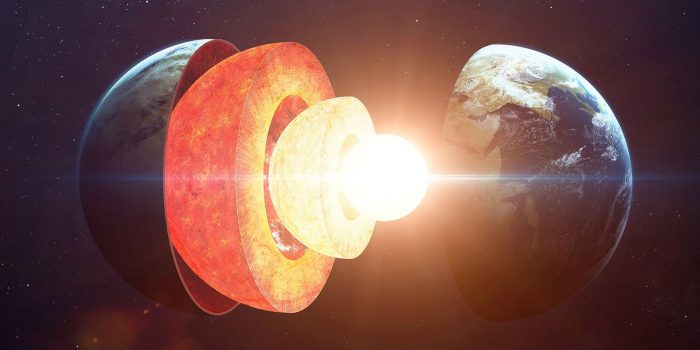The center of the Earth is a strange, odd place. For decades, scientists have suspected that similar to Matryoshka dolls, an additional hidden layer exists within our planet’s solid iron and nickel inner core.
A 2021 study gave the most significant evidence for this enigmatic layer, called Earth’s inner-inner core, by researchers. The findings, published in the Journal of Geophysical Research: Solid Earth, have the potential to alter Earth science textbooks and reshape our knowledge of what lies beneath our feet.
Researchers can attempt to answer fundamental concerns about how Earth’s protective magnetic field developed and what it may have in store for the future by examining the inner core features.
“That’s what protects us from solar winds that would cause life not to exist as we know it today,” study author Joannes Stephenson, a Ph.D. student in geophysics at Australian National University in Canberra, said at the time.

“That means the inner core is really, really important for life.”
However, examining the strata beneath the Earth’s surface is a difficult task. Because there is no way to do fieldwork in the Earth’s core, scientists rely on seismic wave signals, laboratory tests on super-heated, pressured rocks, and computer models that connect all of the data.
Based on these indirect measurements, scientists concluded that the scorchingly hot inner core, with temperatures exceeding 5,000 degrees Celsius (9,000 degrees Fahrenheit), accounts for only 1% of Earth’s total volume.
However, Stephenson and colleagues found proof that the Earth’s inner core might have had two distinct layers a few years ago.
“It’s very exciting – and might mean we have to re-write the textbooks!” Stephenson explained at the time.
The researchers used a search algorithm to go through and compare tens of thousands of inner core models with information on how long seismic waves take to travel through the Earth that the International Seismological Centre gathered over a lengthy period. They looked at many theories of the anisotropy of the inner core and found that some were more convincing than others.
The researchers employed an algorithm to sort through thousands of models of waves traveling through the inner core to find the most precise model that might explain abnormalities from earlier studies.

Though some models claim that the inner core’s material channels seismic waves quicker than the equator, others propose that the material mix allows faster waves parallel to the Earth’s rotational axis. There are still differences of opinion on the exact amount of difference at particular angles.
However, it did show that the slow direction of the waves changed to a 54-degree angle, with the faster direction of the waves flowing parallel to the axis. In addition, the study did not show much variation in depth in the inner core.
“We found evidence that may indicate a change in the structure of iron, which suggests perhaps two separate cooling events in Earth’s history,” Stephenson said.
“The details of this big event are still a bit of a mystery, but we’ve added another piece of the puzzle when it comes to our knowledge of the Earth’s inner core.”

These recent discoveries might help explain why some experimental results contradict what we already know about the Earth. However, the latest findings align with prior studies on the anisotropy of the innermost core.
This research was published in the Journal of Geophysical Research.
An earlier version of this article was published in March 2021.


